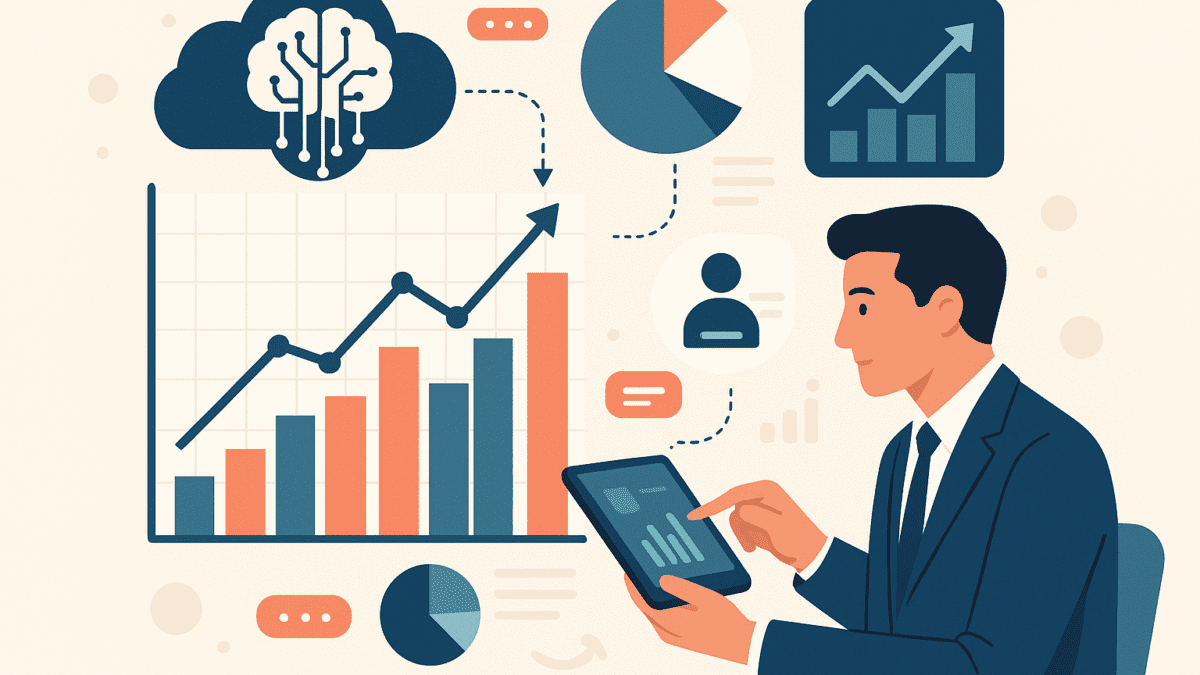How AI-Powered Predictive Analytics is Changing Business Decision-Making in 2025
Table of Contents
Introduction
In 2025, business leaders face more uncertainty and competition than ever before. Data is no longer just a resource — it’s a strategic advantage. AI-powered predictive analytics is one of the most powerful tools enabling businesses to make faster, smarter, and more accurate decisions.
From forecasting market trends to optimizing supply chains, predictive analytics is helping companies turn vast amounts of raw data into actionable insights.
What is AI-Powered Predictive Analytics?
Predictive analytics uses historical data, statistical algorithms, and machine learning models to forecast future outcomes. When powered by AI, these systems can process massive datasets at incredible speed, identifying patterns and correlations that humans might miss.
Unlike traditional reporting, which tells you what happened, predictive analytics tells you what is likely to happen — and why.
How AI Predictive Analytics Works
- Data Collection – AI systems gather structured and unstructured data from multiple sources, including CRM platforms, IoT sensors, social media, and transaction records.
- Data Processing – Advanced algorithms clean, filter, and organize the data.
- Model Training – Machine learning models are trained to recognize trends and patterns.
- Prediction Generation – AI forecasts outcomes such as customer behavior, market shifts, or operational bottlenecks.
- Action Recommendations – Some systems go beyond predictions, suggesting the best next steps.
Real-World Use Cases Across Industries
- Finance: Banks and fintech companies use predictive analytics to detect fraud, assess credit risk, and predict market fluctuations.
- Marketing: Marketers can forecast campaign performance, personalize customer experiences, and optimize ad spend for maximum ROI.
- Healthcare: Hospitals leverage AI models to predict disease outbreaks, patient readmissions, and optimal treatment plans.
- Retail & E-commerce: Retailers predict inventory demand, prevent stockouts, and recommend products to customers in real-time.
- Manufacturing: Predictive maintenance helps manufacturers identify equipment issues before they cause costly downtime.
Benefits of AI-Powered Predictive Analytics
- Better Decision-Making – Leaders can base decisions on real data instead of intuition.
- Proactive Strategies – Predict future risks and opportunities before they occur.
- Cost Savings – Optimize resources and reduce waste.
- Competitive Advantage – Gain insights faster than competitors.
- Customer Satisfaction – Anticipate and meet customer needs before they even ask.
Challenges to Consider
While AI predictive analytics is powerful, it’s not without challenges:
- Data Privacy – Compliance with regulations like GDPR is essential.
- Bias in Data – AI predictions are only as good as the data they are trained on.
- Over-Reliance – Human oversight is still necessary to validate AI recommendations.
The Future of Predictive Analytics in 2025 and Beyond
The next wave of predictive analytics will integrate real-time data streaming with generative AI. Businesses will not only predict outcomes but also simulate different scenarios and test strategies before implementation.
By 2030, analysts predict that predictive analytics will be embedded in most enterprise applications, making AI-driven decision-making a default business function rather than a competitive advantage.
Final Thoughts
AI-powered predictive analytics is no longer an emerging trend — it’s a core driver of business success in 2025. Companies that adopt these tools can move from reactive to proactive, making better decisions with confidence.
The question isn’t whether to adopt AI predictive analytics, but how quickly you can implement it to stay ahead of the curve.
✅ Stay ahead in AI innovation.
Explore the latest technology trends and business insights at iTMunch.
See Also: First-Party Data is the New Oil: Fueling White Paper Lead Gen in a Privacy-First World





